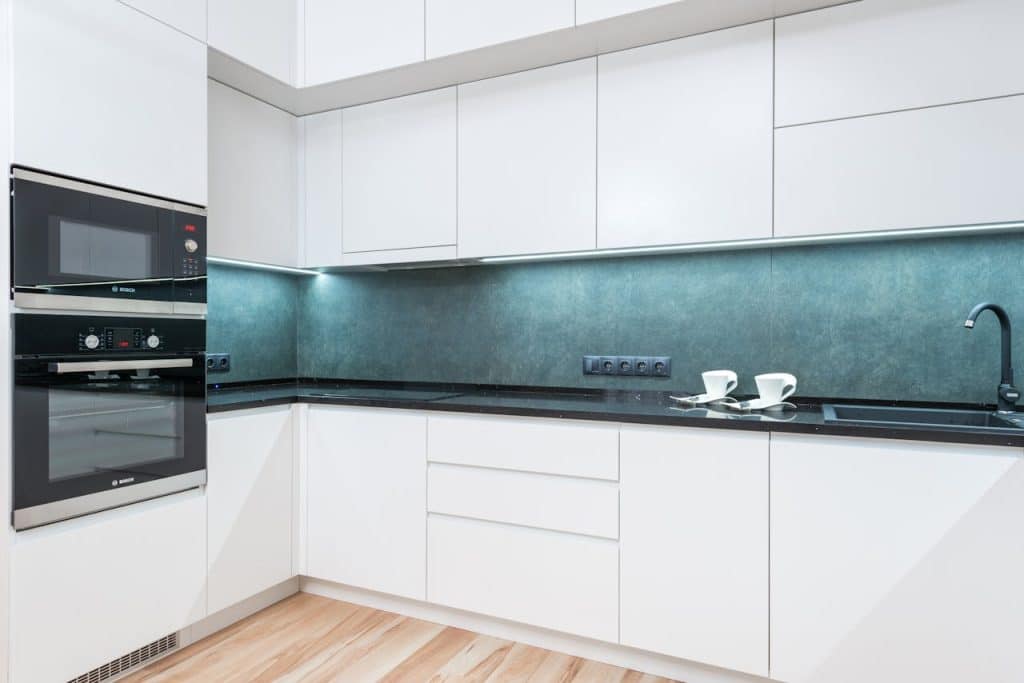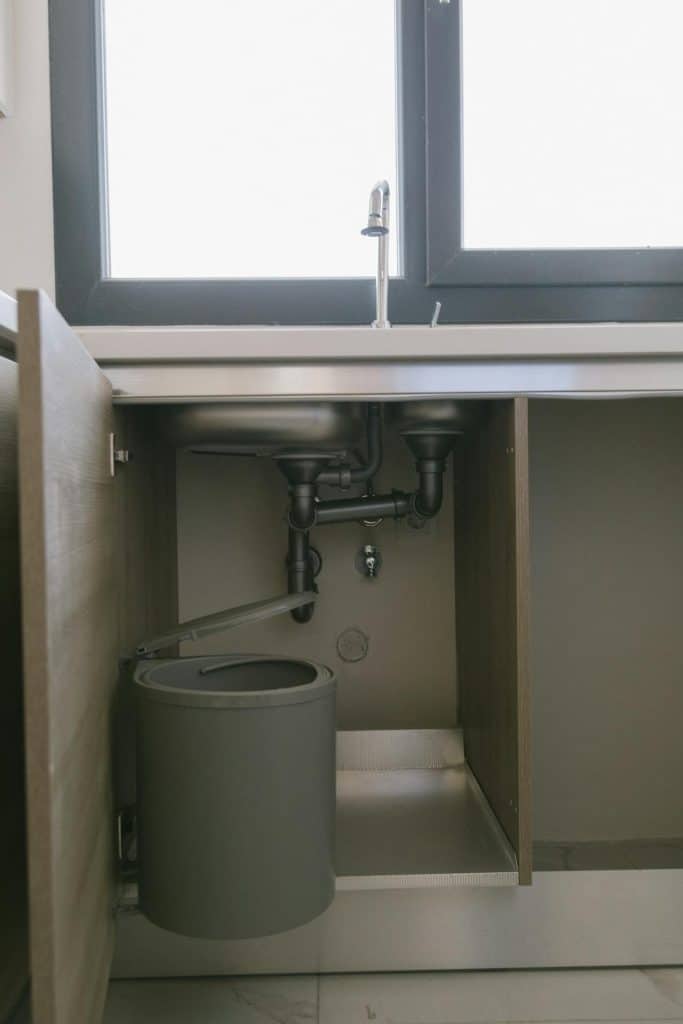Key Takeaways
- All five of these plumbing mistakes can be avoided with proper planning and a blueprint before your kitchen remodel begins.
- Selecting good, durable materials for your pipes and fixtures prevents leaks, failures, and repeated calls for repair down the road.
- Good venting and professional plumbing are key to proper drainage and keeping dangerous sewer gases out of the house.
- By consulting licensed professionals and understanding that plumbing isn’t a simple DIY task, you will steer clear of errors like these and keep your project on track.
- Not taking design decisions, like fixture placement and cabinetry, about plumbing and access for future upgrades or repairs.
- Diligent inspection, continued communication between project teams, and code compliance are critical for protecting your investment and the long-term reliability of your plumbing.
5 plumbing mistakes to avoid during a kitchen remodel include not planning pipe layouts, using the wrong materials, skipping shut-off valves, ignoring local codes, and poor drain placement. Too many kitchen remodels get mired in unexpected costs or delays from plumbing blunders. Small leaks or wrong pipe sizes can lead to water damage or slow drains. Selecting the right pipes and fittings ensures water is clean and steady. Skipping these key steps, like adding shut-off valves, can make repairs a serious pain later on. Adhering to local plumbing codes is essential for passing inspections and ensuring the safety of your kitchen. Proper drain placement prevents future clogs or bad smells. The following section dissects each blunder and offers proactive steps to keep your remodel on course.

The 5 Critical Kitchen Remodel Plumbing Mistakes
Kitchens aren’t just about eye candy remodels. Plumbing, frequently ignored, is essential for both immediate use and enduring success. Not considering plumbing necessities, selecting subpar components, or overlooking planning can lead to expensive mistakes. Belo, we identify common plumbing mistakes, what can go wrong, and how to prevent them.
Mistake | Consequence | Mitigation Strategy |
Neglecting the blueprint | Poor workflow, code violations, missed connections | Create detailed plans, review codes, and allow future changes |
Skimping on materials | Leaks, repairs, costly replacements | Invest in quality, match pipes, and choose durable fixtures |
Ignoring air vents | Sewer gas, slow drains, and future issues | Design venting, consult experts, check compliance |
Underestimating the DIY | Floods, improper installs, expensive fixes | Know limits, hire professionals, learn basics |
Forgetting the future | Costly upgrades, inflexible layout | Plan access, allow for new appliances, and a flexible design |
1. Neglecting The Blueprint
Skipping a thorough blueprint. Without a plan, it’s too easy to wind up with mismatched pipes or awkwardly placed appliances or missed code requirements. A good blueprint should incorporate the kitchen work triangle—sink, stove, and refrigerator—so the workflow is frictionless. Consider potential future modifications. Create flexibility in your plan so new plumbing connections can be incorporated when necessary. Always review local plumbing codes before finalizing your blueprint, as non-compliance can stall your project and result in costly fixes.
2. Skimping On Materials
Saving money on pipes and fixtures may seem savvy initially, but it tends to result in leaks or malfunctions. Quality stoves and fittings cost more initially but save you money in repairs. Long-lasting faucets and valves keep your kitchen flowing without constant replacement. Never pair dissimilar pipe materials. This induces corrosion and leaks. Select appliances that are rated efficient and long-lasting so you won’t have performance issues.
3. Ignoring Air Vents
Not everyone knows venting is such an important part of kitchen plumbing. Vents keep sewer gases out and assist drains in working properly. Skip venting or do it wrong, and stinky smells and sluggish drains can ensue. Every fixture requires a vent. You’ll want to have a professional plumber review your vent layout and ensure it is up to code. Missing vents are a frequent oversight, particularly in DIY remodels.
4. Underestimating The DIY
Kitchen plumbing feels like it should be doable. Most of the work is actually pretty skilled. Undertaking complicated tasks without sufficient experience is a recipe for leaks, floods, or code violations. It’s smart to only handle rudimentary jobs yourself, such as putting in a new sink faucet or repairing a leaky pipe. For anything significant, bring in a licensed plumber. This helps avoid issues that might destroy your cabinets, walls, or floors and cause hefty repair bills.
5. Forgetting The Future
Most remodels don’t plan for the upgrade to come. Perhaps you’ll need a dishwasher, water filter, or new sink down the line. If plumbing is inaccessible or inflexible, tacking these on is costly. Space behind cabinets for pipes. Opt for flexible connectors and leave plumbing exposed. This future-proofs your kitchen against surprise needs.
Revealing Secret Plumbing Issues
When remodeling your kitchen, it’s important to be aware of what’s hidden behind the walls and beneath the floors. Many problems can be hiding out of sight, and they might show up once you start your project. This can lead to delays and unexpected costs. Checking everything thoroughly before you begin helps to prevent big issues later on in your renovation.
Early Warning Signs
Water stains, warped cabinetry, or patches of mold frequently indicate leaks or moisture accumulation that may have potentially lingered undetected for months. These can result in larger issues if left untreated.
Strange noises, such as banging or whistling pipes, could indicate worn valves, air in the lines, or loose pipe supports. At other times, these sounds indicate your pipes have moved out of position.
Keep an eye out for slow drains and puddles beneath appliances. Hidden leaks damage floors and cabinets, no matter how small they might seem.
A sudden decrease in water pressure generally indicates a clog, corrosion in aging pipes, or even a small leak. Any of these can quickly become emergencies.
The Inspection Process
Plumbing issue surprises are best avoided through a comprehensive review before demolition or installation. Even more so if the pipes are being relocated or modified, licensed plumbers can see problems lurking beneath.
The plumber should check all pipes, fittings, and joints. They inspect for rust, aging, and code violations. Going over their discoveries allows you to schedule fixes or improvements. For example, transferring aged galvanized to copper or PEX tubing.
It’s important to adhere to local building codes, not only to be safe, but to safeguard warranties on appliances and to prevent fines down the road.
Budgeting For Surprises
Hidden plumbing issues can test even the best remodel plans. Here’s the trick: leave a buffer of at least 10 to 15 percent in your plumbing budget for the unknown. Map out a to-do list for every repair, from pipe replacements to venting enhancements.
Example: Uncovering hidden plumbing issues — Research common problems, like old pipes that give out after new appliances are installed or leaks from bad fittings. Even a minor leak can translate into expensive repairs if it ruins brand-new cabinets or flooring.
Tip: Select your sink right away so the pipes and drain can be fitted to the layout. Don’t hook up too many fixtures to a single conduit, which can lead to clogging and a pressure drop.
Leave a little nest egg in your remodel budget. It minimizes stress and makes sure you are prepared should issues emerge once the walls are open.
How Design Choices Impact Plumbing
All design decisions in a kitchen remodel impact plumbing functionality and durability. Even seemingly minor decisions, such as where to locate a sink or the height of a cabinet, can complicate or facilitate repairs. A design that places fixtures, appliances, and storage in optimal locations can reduce plumbing issues and additional expenses. Taking these considerations into account during the design process creates a kitchen that is not only beautiful but also more functional, safer, and simpler to maintain.
Fixture Placement
As usual, design decisions directly influence the plumbing. For example, sinks near dishwashers expedite clean-up, while those near existing plumbing lines keep installation easy. If a fixture is located too far away from the main pipes, water pressure can drop, and drains may get clogged more frequently. Always leave enough open space around each fixture so you can access the pipes underneath for repairs or upgrades down the road.
Occasionally, folks attempt to conserve space by running multiple fixtures off a single set of pipes. It may be odor-free and neat, but frequently this causes drains to back up or leak eventually. It’s wise to collaborate with a remodeler savvy in designing fixture locations that simplify upkeep and avoid headaches down the line.
Cabinet Selection
Cabinets should allow access to plumbing components without destroying them. Steer clear of fixed-shelf or deep-backed designs that obstruct shutoff valves and traps. Custom cabinets are a nice choice if your pipes run in strange locations or you require additional space for aging-in-place elements, such as lower counters or wider walkways. These modifications not only facilitate human circulation but also maintain accessible plumbing.
Select cabinet materials that can withstand splashes or minor leaks. Cheap woods or laminates may look pretty initially, but they warp or mold when wet and cause expensive repairs. Intelligent storage reduces clutter and ensures that under-sink plumbing remains unencumbered and easy to access.
Appliance Integration
Any appliance with water lines, such as dishwashers or garbage disposals, requires premeditated design in terms of space and plumbing hook-ups. Placing appliances near existing supply and drain lines reduces costs and plumbing headaches. Smart designs conserve water and do not overwhelm old pipes.
Design decisions affect plumbing, too. Contractors can assist in aligning appliances with appropriate plumbing and leave adequate space for venting or potential upgrades. Good lighting helps since it aids in leak detection and makes repairs safer and quicker.

Avoiding Code Compliance Pitfalls
Remodeling a kitchen means you have to adhere to plumbing codes that keep your home safe and current. These rules can be rigid and vary significantly by location. Missing them can make your home hard to sell, can be expensive to remedy, and can even halt work on your remodel. Here’s a table with some key plumbing codes, what they require, and some fast compliance tips.
Plumbing Code Area | Requirement | Compliance Tip |
Pipe Slope | Minimum slope varies (usually 2%) | Check local rules for the exact slope |
Material Approval | Use approved pipe and fittings | Avoid rubber fittings and corrugated piping |
Trap Installation | Use the correct trap type and size | Install ‘P’ traps, not ‘S’ or bottle traps |
Fixture Clearance | Maintain space around fixtures (toilet, sinks) | Measure before installing to meet minimums |
Water Shut-offs | Must be accessible and functional | Test all shut-offs after installation |
Cleanout Use | Separate cleanout and drain functions | Never convert cleanouts into drains |
Understanding Permits
You need to secure the correct permits before initiating any plumbing work. Neglecting this is a recipe for costly issues down the road, particularly when selling a home or undertaking a major remodel. Each city or town has different permit requirements, so consult your local building department or the Uniform Plumbing Code. Working through a contractor ensures that all the work is in line with current codes. Save your permits and inspection reports. You might need them for your next project.
Material Standards
Plumbing parts have to pass code for safety and quality. Installing non-code-compliant pipes or fittings, like flexible rubber joints or corrugated pipes, can cause leaks or inspections to fail. Always verify that your fixtures and pipe materials are stamped as approved for use in your region. Professional plumbers can assist you in selecting the appropriate items to prevent any complications.
Inspection Failures
A failed plumbing inspection can delay the entire remodel, waste money, and postpone your move-in day. If inspectors find issues, address them immediately and stay in contact with them to verify you are heading in the right direction. You will require more than one re-inspection, particularly if the initial attempt fails. Open communication and fast correction help to avoid extended delays or more serious code violations.
The Gap Between Plumbers and ContractorsPlumber-contractor’r disconnects in kitchen remodels cause excessive delays and expensive errors. Both play different but intersecting roles. Contractors oversee the renovation and all trades. Plumbers deal with water systems, fixtures, and drainage. Without these clear boundaries, day-to-day irritations such as unannounced water turn-offs or random fixture swaps will derail momentum and frustrate all parties. Miscommunication or lack of foresight, especially when it comes to plumbers, can lead to issues like connecting dissimilar metals, which will cause corrosion if not treated with appropriate dielectric unions.
Defining Roles
Plumbers take care of all the plumbing lines, connections, fixture installations, and local code compliance. Contractors manage the entire remodel by hiring trades, managing timelines, and making sure the project is safe and well-built. If these boundaries aren’t established, overlap can take place. For example, a contractor might assume a plumber will relocate a sink base, but if this isn’t explicit, work might come to a halt. By establishing expectations up front, like who selects and installs fixtures, you guarantee that nothing falls through the cracks or gets done twice.
Every role should be in the contract specifying each party’s scope. This encourages collaboration and makes everyone accountable. For instance, noting that only plumbers connect fixtures keeps inexperienced labor from screwing up and hooking a bunch of fixtures to one pipe set, a rookie mistake that guarantees future plumbing headaches. Role defining at the outset and recording it steers clear of conflict and maintains project focus.
Communication Plan
A solid communication plan minimizes miscommunication. Project teams should decide how updates will be communicated via e-mail, phone, or shared online platforms. Regular check-ins, even short ones, can catch plumbing issues before they multiply. Project management tools like Trello or Asana can log plumbing tasks, deadlines, and update the team on progress.
Promoting open dialogue is important. It assists in catching early mistakes, such as connecting copper and steel pipes, which require special couplings to prevent corrosion. By taking care of problems as soon as they come up, you minimize disruptions and keep your remodel humming along.
Timing Your Plumbing Work Perfectly
Plumbing needs to be scheduled with other work to be efficient. If the plumber comes after the cabinets, then they may have to redo the work, which delays everything. It’s vital that schedules are shared and all team members are updated on changes. For instance, if a fixture is running late, everyone should be informed to prevent wasted effort.
Plumbing should be installed at the right time. Placing a sink before the completion of the countertop might result in additional expenses or harm to new surfaces. We like to anticipate and coordinate; it just saves time and expensive disruptions, particularly when you’re dealing with an expert.
Protecting Your Project
Preserving your plumbing in a kitchen remodel prevents headaches and surcharges. Project safeguards include strategic plans, ongoing communication, and rigorous quality control, which are vital to a smooth remodel. Delays and budget overruns are common. Adding a contingency fund of 10 to 15 percent of the budget can cover surprises like concealed pipe damage or code-mandated upgrades. Selecting durable materials is not purely aesthetic. Top-grade pipes, valves, and fixtures resist intense use and help keep leaks or corrosion at bay, enabling a kitchen that supports the needs of today and tomorrow.
During Demolition
Meticulous demolition saves you from inadvertently destroying hidden pipes and fixtures. Before beginning, trace all lines for plumbing on walls and floors so that workers steer clear. Protect your project’s pipes and drains with thick plastic sheets or plywood to guard them from debris falling.
Remind all on-site workers to honor the taped lines and coverings. One demolition blunder away from water leaks and repair that brings everything to a screeching halt. Transparent communication, explicit directions, and visual cues assist in avoiding expensive errors.
Doing a day’s end debris clean-up keeps pipes and drains from clogging. This easy habit decreases tripping hazards and keeps active work safer and more productive. Shielding plumbing upfront is efficient and cost-effective.
System Testing
Once installed, pressure test all new and existing piping. Turn on all taps, run appliances, check for leaks, and measure water pressure at each. Protecting Your Project: Use a pressure gauge to ensure readings fall within the normal range, which is generally between 275 and 550 kPA.
If you notice leaks, strange noises, or sluggish drains, fix them immediately. Record results of each test with photos or pressure gauges for posterity and proof of plumbing compliance. This is key not only for inspections but for your peace of mind down the road.
Final Walkthrough
Check every exposed and concealed plumbing connection thoroughly. Test all fittings, including faucets, dishwashers, and water filters, to ensure they function correctly.
Check local codes to ensure all installs are safe. If you come across any, jot them down and resolve them before completing.
This last check makes sure your remodel sustains everyday rhythms, remains practical, and holds the ‘wow factor’ for years.
Conclusion
A kitchen redo demands savvy moves with piping and water lines. Little plumbing flubs can be expensive, delay work, or compromise health and safety. Catch old leaks early, install pipes with caution, and stay up to code. Call in a trusted plumber and collaborate with your crew from beginning to end. That way, fresh design meets hard-core pipes and big bills down the road. Take a moment to review the plan and eliminate any plumbing angst before the hammers fly.
Frequently Asked Questions
1. What Are The Most Common Plumbing Mistakes During A Kitchen Remodel?
The biggest mistakes are neglecting old pipes, having bad layouts, bypassing permits, ignoring plumbing codes, and failing to sync plumbers and contractors.
2. Why Is It Important To Check For Hidden Plumbing Problems Before Remodeling?
Latent problems such as leaks or aging pipes can lead to significant damage down the road. Early checking prevents expensive repairs and keeps your kitchen safe and operational.
3. How Can Kitchen Design Choices Affect Plumbing?
Design decisions, such as where to locate the sink or an appliance, may necessitate relocating pipes or drains. Bad planning results in additional labor, additional costs, and plumbing issues.
4. What Is Plumbing Code Compliance, CE, And Why Does It Matter?
Plumbing codes are community regulations for secure water and sewage systems. Observing these keeps you safe, avoids fines, and gets your remodel through inspection.
5. How Can Miscommunication Between Plumbers And Contractors Cause Issues?
If plumbers and contractors are not in sync, pipes can get installed incorrectly or even damaged. This may cause project delays, increase costs, and create safety hazards.
6. What Are The Benefits Of Hiring A Licensed Plumber For A Kitchen Remodel?
A licensed plumber knows local codes and best practices. Their experience keeps you from making mistakes, protects your investment, and ensures your kitchen is safe.
7. How Can I Protect My Kitchen Remodel Project From Plumbing Mistakes?
Avoid these 5 plumbing mistakes during your kitchen remodel. Hire pros, investigate hidden problems early, double-check plans, and observe all plumbing codes. A little planning goes a long way toward saving you time and money.
Faucet Repair & Kitchen Plumbing In Santa Rosa – Fast, Honest, Local Help
Leaky faucets, low water pressure, or plumbing issues in your kitchen can quickly disrupt your day. Don’t let a small drip or faulty fixture turn into a bigger, costlier problem. The trusted team at Yorkshire Plumbing provides expert faucet repair and kitchen plumbing services to keep your home running smoothly.
With nearly a decade of experience and the right tools for the job, we deliver real solutions, not quick fixes. From repairing worn-out faucets and clearing clogs to upgrading sinks, fixtures, and water lines, our licensed plumbers are ready to help.
Whether you’re dealing with a leaky kitchen faucet, planning a remodel, or facing unexpected plumbing trouble, Yorkshire Plumbing has you covered. Call or message us today for a free estimate. We offer same-day service when possible and are always available for urgent jobs.
Yorkshire Plumbing is your go-to, family-owned team for reliable faucet repair and kitchen plumbing in Santa Rosa.
Disclaimer
The information provided on this website is for general informational and educational purposes only and is not intended as professional plumbing or construction advice. You should consult with a licensed plumber or qualified contractor for guidance specific to your home or situation. Do not rely solely on the content of this site to make decisions about plumbing repairs, installations, or maintenance. While we strive to keep the information current and accurate, it may not reflect the most recent industry standards or code requirements. Yorkshire Plumbing & Drain Services disclaims all liability for any actions taken or not taken based on the content of this site, to the fullest extent permitted by law.






